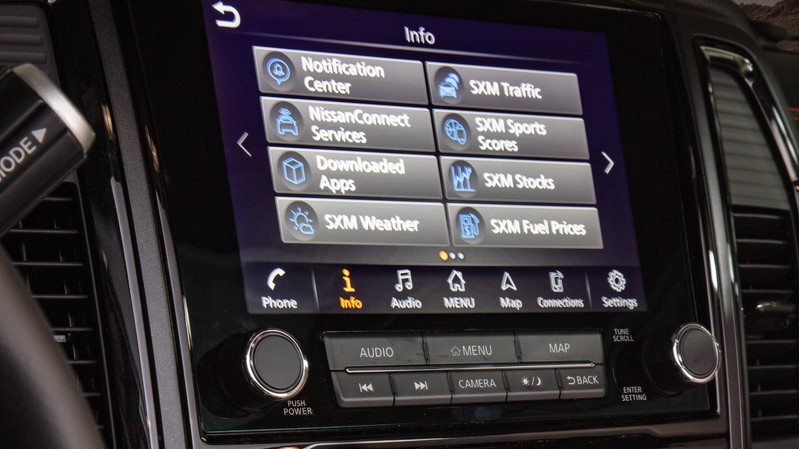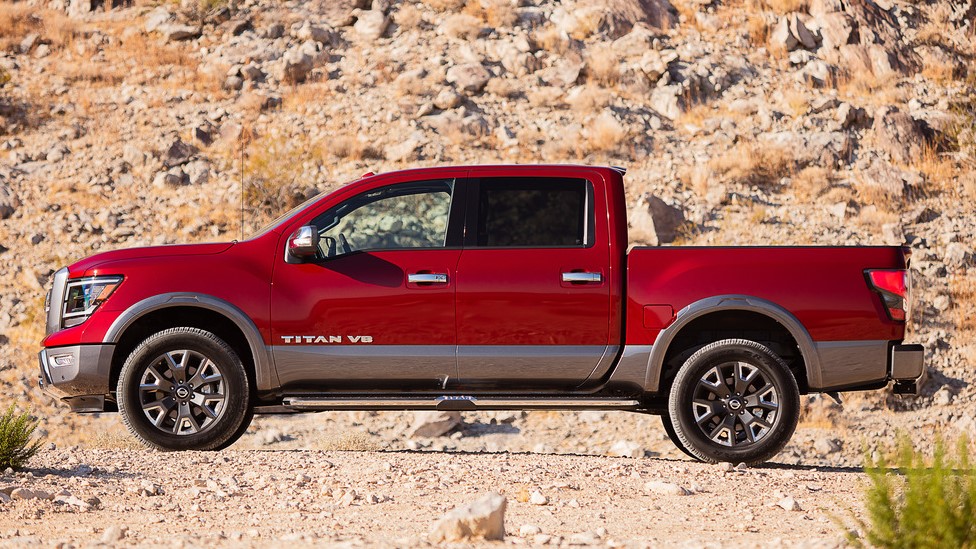What will happen when 5G works in trucks like the 2020 Nissan Titan?
Your car could be part of a vast 5G network (if you want it to)

The dream of the connected car has been somewhat slow to materialize. The infrastructure around us has not installed sensors and access points fast enough – unless you are lucky enough to live in Las Vegas. Stoplights, stop-signs, road barriers – they are all just as disconnected as they were 30-40 years ago in most areas.
In the meantime, cars have become increasingly more connected, just not to each other. Almost every new make and model these days offer some form of connectivity, mostly for entertainment purposes (aka, watching movies on long trips).

And speeds have improved with 4G LTE access, sometimes running at 20Mbps in some areas or even faster. A roving, moving hotpot is a smart innovation that could lead us to more connected services.
It’s smart enough that I was curious about the current state of this connectivity, how fast it runs, and if it is reliable enough for the coming age of more connectivity (and 5G service).
Easy streaming
I fired up the hotspot in a 2020 Nissan Titan recently, just to find out. In a remote area, conserving a little usage on my own smartphone and parked at the side of the road, I connected using an Apple iPad and handed one to a passenger in the backseat.
In modern vehicles, 4G LTE service is common – on the Titan, you can expect to connect at speeds fast enough to watch a movie on Netflix. The hotspot is easy to find on the main display, and for those of us who throttle our usage to make sure we don’t get overcharges, it can be an amazing perk on a long trip or while waiting in the Trader Joe’s parking lot.

Nissan requires that you login to a portal in your browser to get started, and the costs are fairly reasonable, at least compared to home Internet service in some areas. You pay $20 (about £15, AU$30) per month for 1GB of access; for 5GB of bandwidth per month, it’s $60 (about £45, AU$85) per month.
Sign up for breaking news, reviews, opinion, top tech deals, and more.
The main advantage here is that you don’t need a phone in the truck at all, or a hotspot of your own. You don’t have to 'provide' service with your own gadget, so it’s always available for whoever happens to climb inside the truck.
In my tests, the service was reliable and fast even as I was driving around town. There are no issues with the Wi-Fi not working because you are inside a building or because too many people are logged in.
Strong and steady
One thing I’ve noticed about 4G LTE service in cars – it's reliable enough that we didn’t experience any stuttering or pauses. Maybe the Titan acts as a massive antenna (my guess is that the antenna is built into the roof, but this isn't publicly disclosed as near as I can tell).
That’s encouraging, because I know what’s coming next.

5G service will be faster, more reliable, more prevalent, and less susceptible to interference. Someday, 5G sensors and access points will be installed on the roadways, at exits, on bridges, and in other cars – forming a massive 5G network infrastructure. The fact that the throughput on 4G LTE is consistent is a good sign that cars will be able to handle this next step.
When will it happen? My educated guess is that it will be sooner rather than later. 5G is making headlines, and it’s probably going to roll out quickly in 2020, so automakers will likely jump on board with new services. It’s also here to stay – it’s an opportunity for cities to move forward with a network standard they know won’t be replaced or superseded anytime soon. We hope.

On The Road is TechRadar's regular look at the futuristic tech in today's hottest cars. John Brandon, a journalist who's been writing about cars for 12 years, puts a new car and its cutting-edge tech through the paces every week. One goal: To find out which new technologies will lead us to fully self-driving cars.

John Brandon has covered gadgets and cars for the past 12 years having published over 12,000 articles and tested nearly 8,000 products. He's nothing if not prolific. Before starting his writing career, he led an Information Design practice at a large consumer electronics retailer in the US. His hobbies include deep sea exploration, complaining about the weather, and engineering a vast multiverse conspiracy.